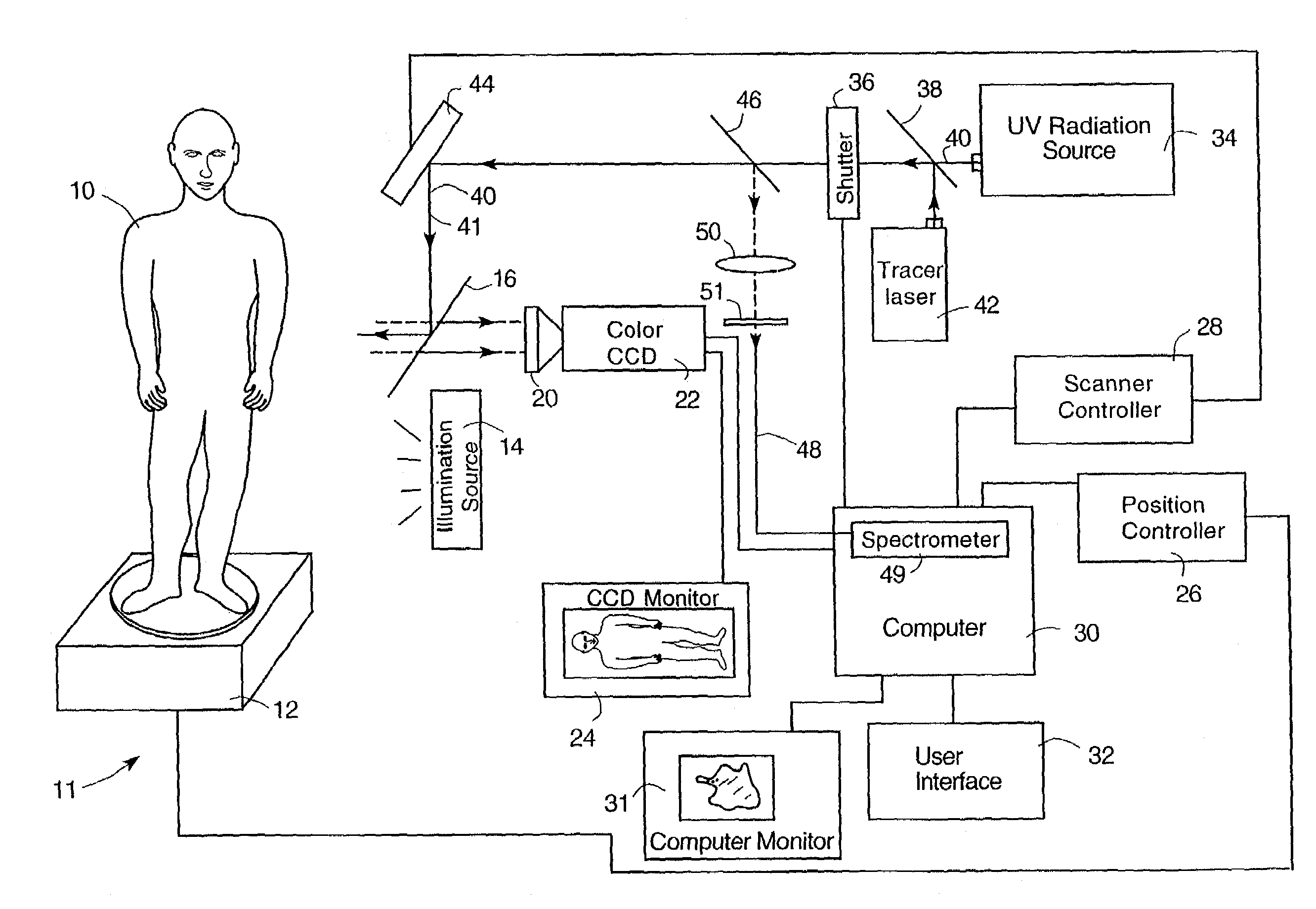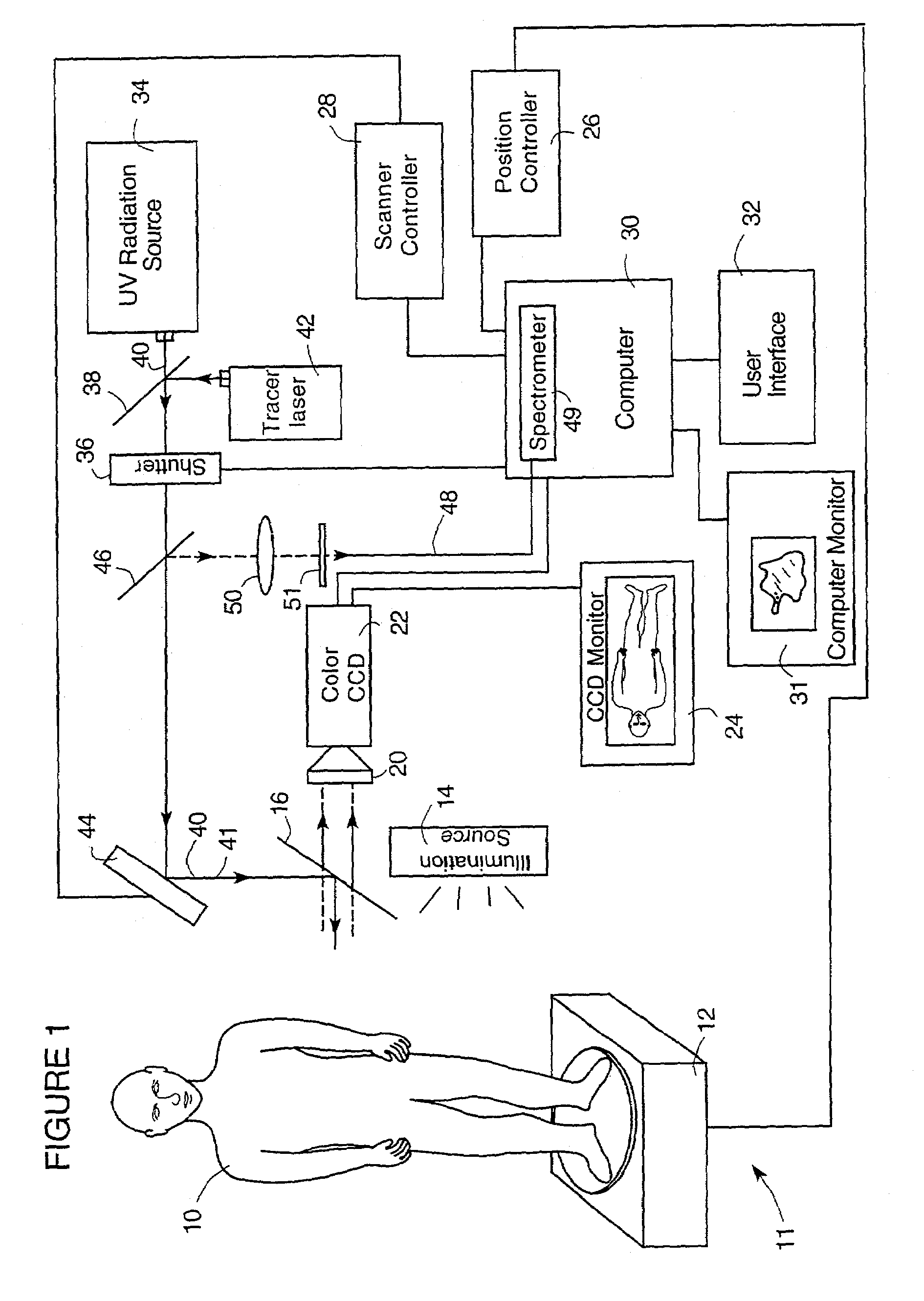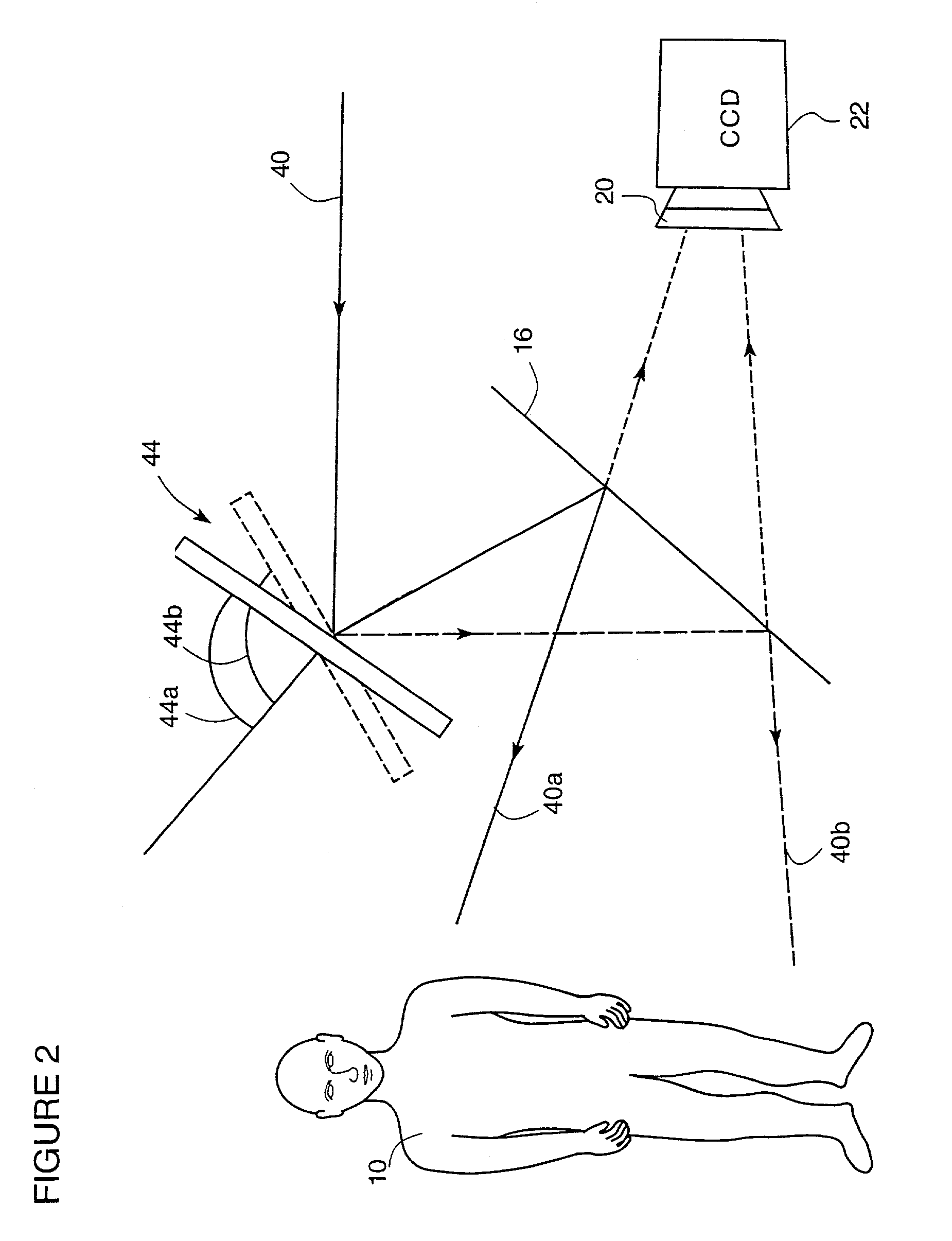Phototherapy methods and systems
a technology of phototherapy and system, applied in the field of psoriasis treatment, can solve the problems of unaffected areas of skin that are not affected, e.g., normal skin, and damage, and achieve the effects of reducing risks, increasing the effectiveness of phototherapy, and reducing skin cancer risk
- Summary
- Abstract
- Description
- Claims
- Application Information
AI Technical Summary
Benefits of technology
Problems solved by technology
Method used
Image
Examples
Embodiment Construction
Phototherapeutic Treatment
[0035]The invention features a method and device for delivering therapeutic ultraviolet (UV) radiation to plaques of psoriasis or other skin disorders, with little or no exposure to clinically normal skin. A collimated source of UV radiation scans, or is scanned, over a patient's body such that only plaques of psoriasis receive a therapeutic exposure dose of UV radiation.
[0036]Psoriasis responds best to UV radiation in a narrow wavelength region near 310 nm. At wavelengths longer than 310 nm, the effectiveness of radiation to treat psoriasis, i.e., the “action spectrum,” is similar to the spectrum for delayed erythema (i.e., tanning). At wavelengths shorter than 300 nm, sunburn occurs much more quickly than clearing of psoriasis. See, for example, J. A. Parrish and K. F. Jaenicke in “Action spectrum for phototherapy of psoriasis” (J. Invest. Dermatol., 76:336, 1981). High doses of UV radiation more effectively clears psoriasis. For example, exposing individ...
PUM
 Login to View More
Login to View More Abstract
Description
Claims
Application Information
 Login to View More
Login to View More - R&D
- Intellectual Property
- Life Sciences
- Materials
- Tech Scout
- Unparalleled Data Quality
- Higher Quality Content
- 60% Fewer Hallucinations
Browse by: Latest US Patents, China's latest patents, Technical Efficacy Thesaurus, Application Domain, Technology Topic, Popular Technical Reports.
© 2025 PatSnap. All rights reserved.Legal|Privacy policy|Modern Slavery Act Transparency Statement|Sitemap|About US| Contact US: help@patsnap.com



